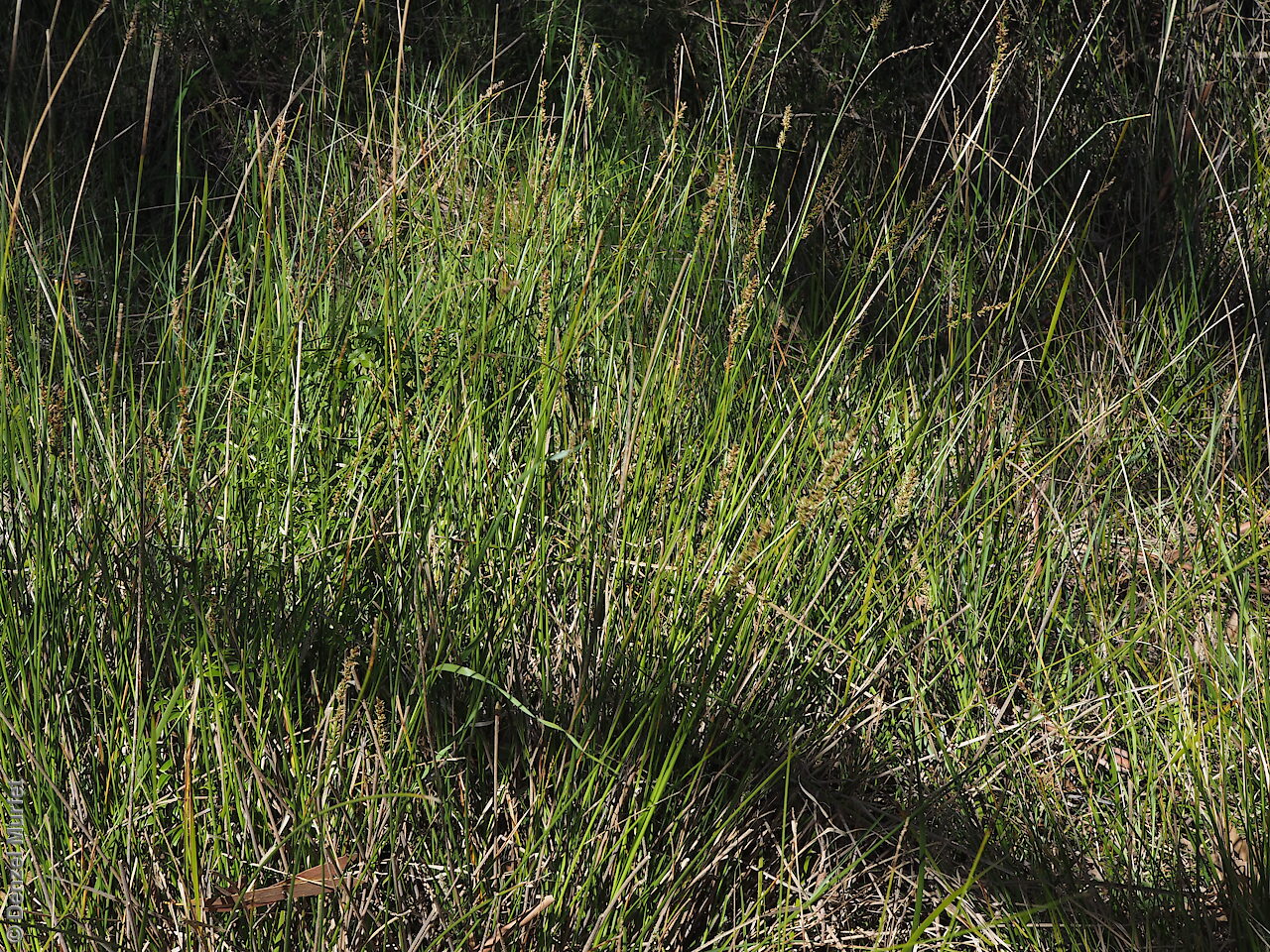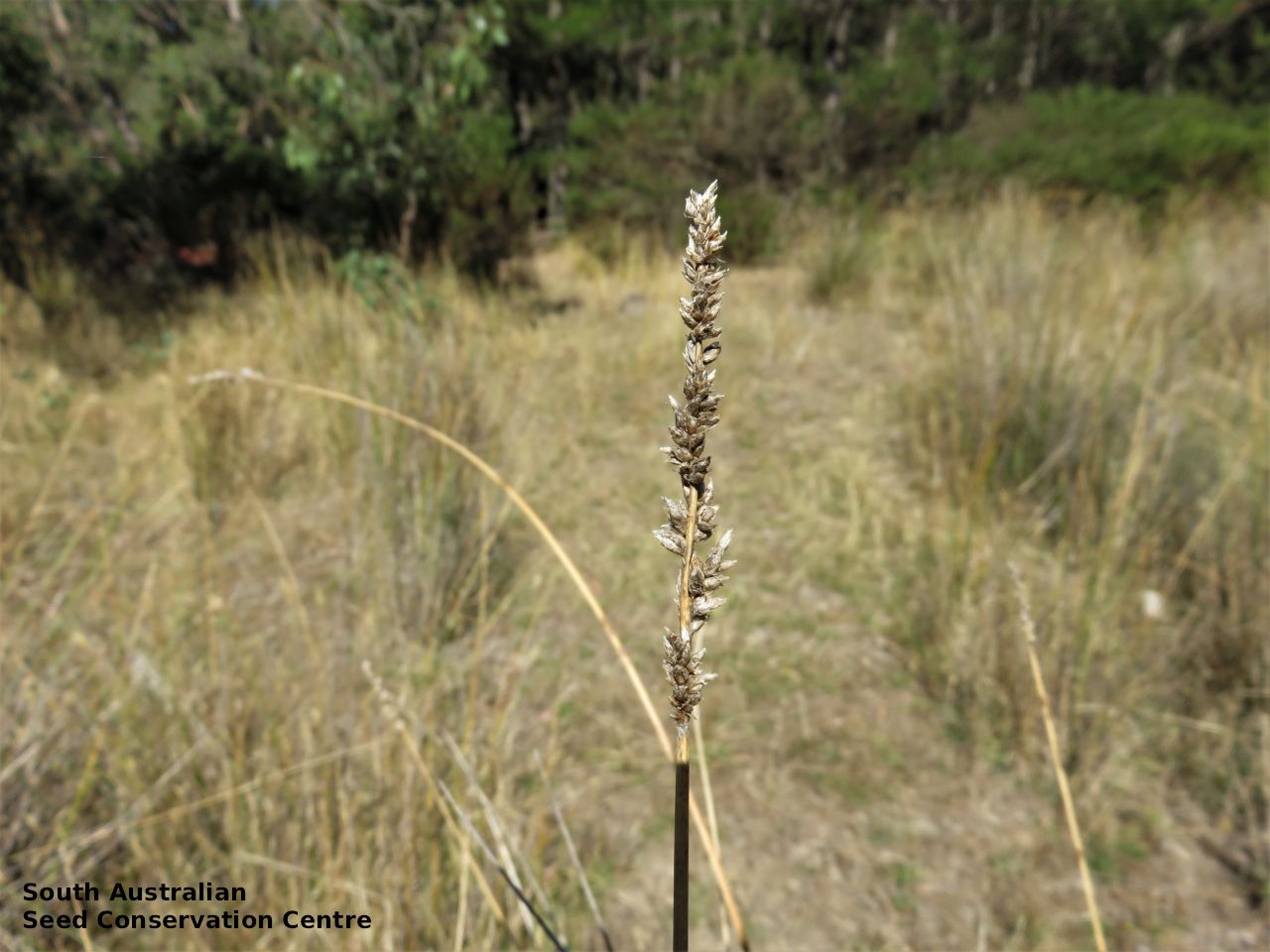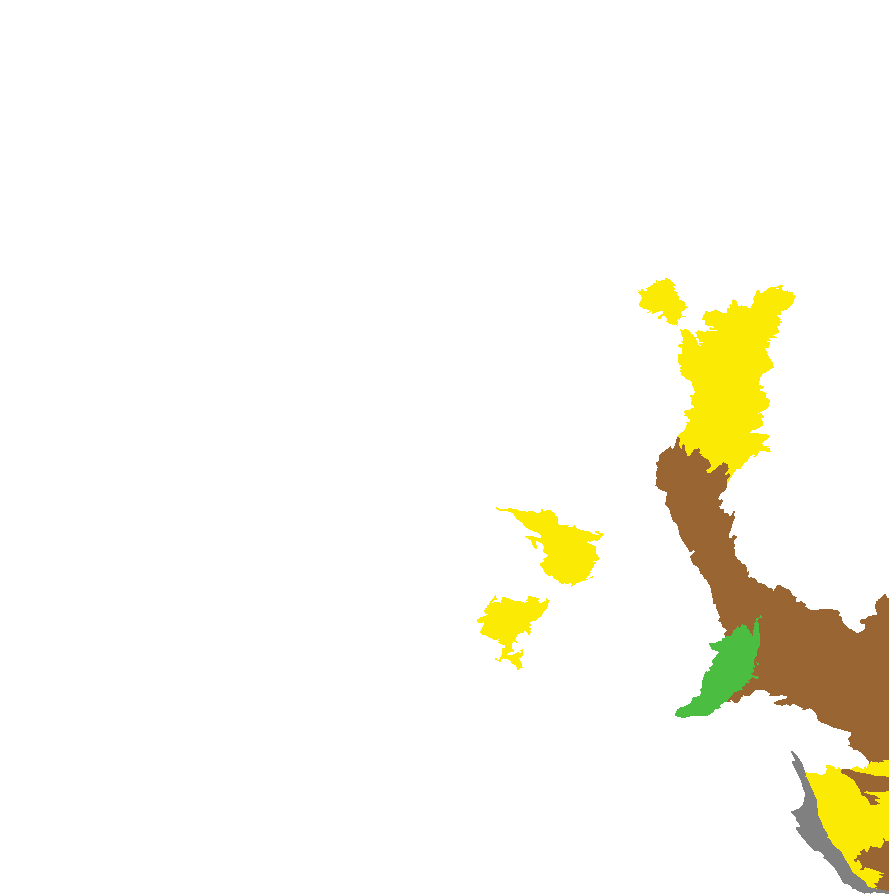










Botanical art
Etymology
Carex is the classical Latin name for sedge, perhaps from 'carere' meaning to be absent, as the upper spikes are staminate (male) and do not produce seeds. May have been used by Virgil for plants in this genus and derives from ancient Greek 'keiro' meaning to cut, referring to the sharp edge of leaf margins. tereticaulis from the Latin 'teres' meaning rounded and 'caulis' meaning a stem, referring to the stem which is mostly terete (sometime obtusely triangular near the top only).
Distribution and status
Found on southern Eyre Peninsula, Flinders Ranges, Mount Lofty Ranges and the South-east in South Australia, growing in damp ground, especially if subject to occasional flooding. Also found in Western Australia, New South Wales, Victoria and Tasmania. Native. Common in South Australia. Rare in Western Australia. Common in the other States.
Herbarium regions: Flinders Ranges, Eyre Peninsula, Northern Lofty, Murray, Southern Lofty, South Eastern, Green Adelaide
NRM regions: Adelaide and Mount Lofty Ranges, Eyre Peninsula, South Australian Arid Lands, South Australian Murray-Darling Basin, South East
AVH map: SA distribution map (external link)
Plant description
Densely tufted sedge in clumps to 1 m diameter and to 1 m high with stems terete or obtusely triangular only below the spike, smooth, finely striate. Leaves often rudimentary or reduced to sheaths; sometimes well-developed laminae but these are relatively inconspicuous amongst the numerous culms. Flower-spike a long narrow spike-like panicle, mostly less than 10 cm long, the lowest bracts usually inconspicuous; glumes somewhat obtuse, the female glumes with a conspicuous broad hyaline border. Flowering between August and April. Fruits are brown, scattered clusters of heads along a spike, each containing numerous individual fruit. Seeds are brown ovoid nut to 3 mm long and 2.5 mm wide, covered by a striated papery layer with serrated edge and forked tip. Seed embryo type is capitate.
Seed collection and propagation
Collect seeds between February and November. Collect fruits either by running your hands along the heads, mature seeds will come-off easily or cut whole heads that are brown, containing dark hard seeds. Place the heads in a tray and leave to dry for one to two weeks. Then rub the heads with a rubber bung to dislodge the seeds. Use a sieve to separate any unwanted material. Store the seeds with a desiccant such as dried silica beads or dry rice, in an air tight container in a cool and dry place.
| Location | No. of seeds (weight grams) | Number of plants | Date collected | Collection number Collection location | Date stored | % Viability | Storage temperature |
|---|---|---|---|---|---|---|---|
| BGA | 6,844 (10.13 g) | 65 | 29-Apr-2004 | MKJ28 Southern Lofty | 1-Sep-2004 | N/C | +5°C, -18°C |
| BGA MSB | 14,900 (20.93 g) 14,900 (20.93 g) | 62 | 5-Feb-2004 | MKJ26 Southern Lofty | 1-Sep-2004 | N/C | +5°C, -18°C |
Number of plants: This is the number of plants from which the seeds were collected.
Collection location: The Herbarium of South Australia's region name.
% Viability: Percentage of filled healthy seeds determined by a cut test or x-ray.